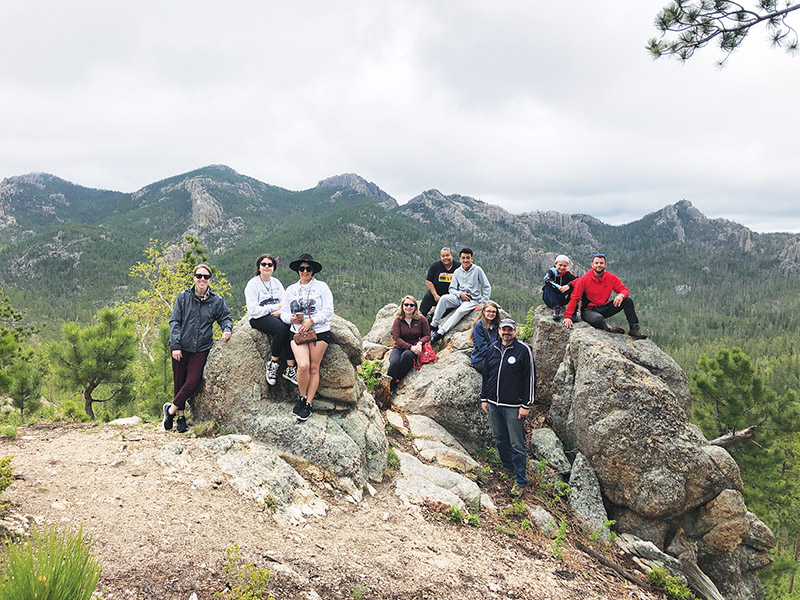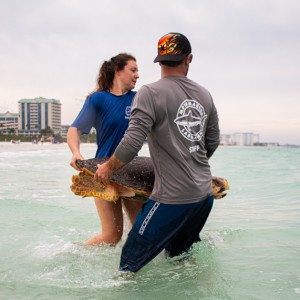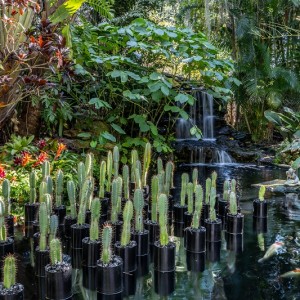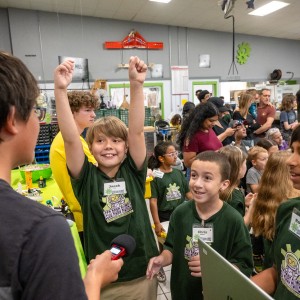“It’s a lot of fun to take a rock pick to solid stone with your friends or people you just newly met—it creates a great connection,” says Constance Mae Castro, a 14-year-old Manatee County student. Sometimes digging up the past is all it takes to make new friends. The earth’s past, that is, specifically the fossilized remains of dinosaurs that walked this planet some 30-odd million years ago. That’s what eight Manatee County students and their parents found themselves doing this past June, when they departed for the Nebraska Badlands as a part of the Bishop Museum of Science and Nature’s annual Fossil Expedition.
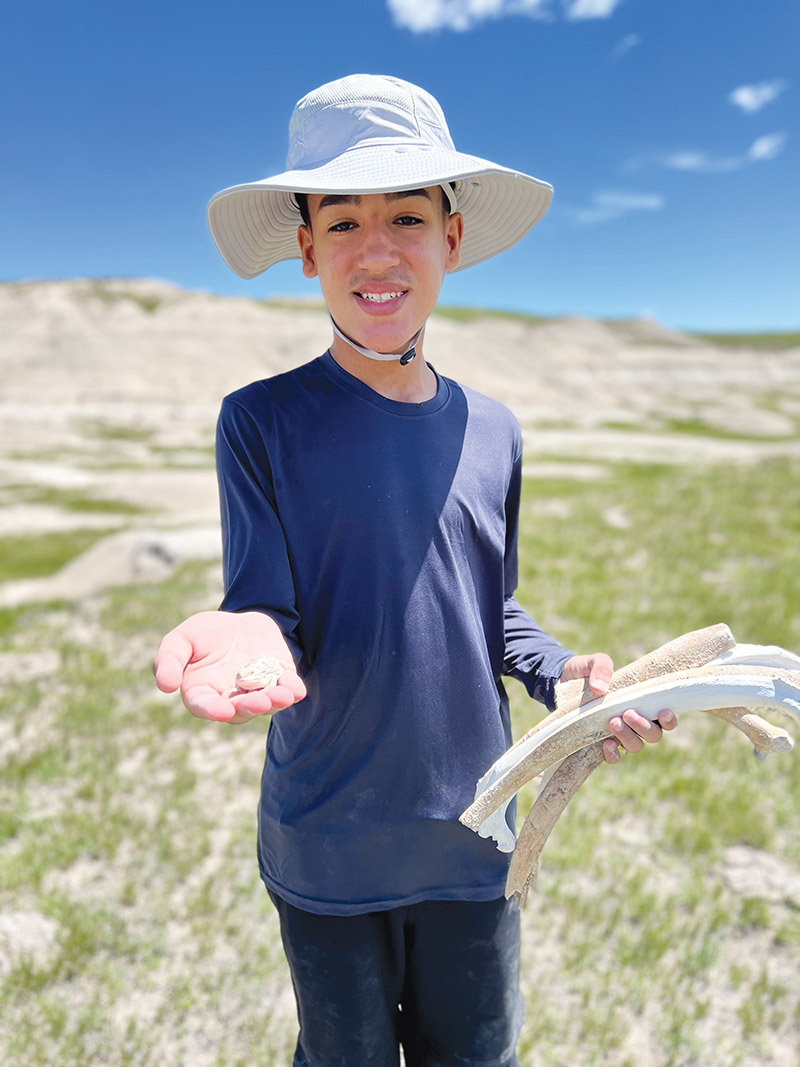
For the past decade, the trip, funded by the Toomey Foundation for Natural Sciences, has taken Manatee County school teachers out to Bradenton entrepreneur Jim Toomey’s ranch in the Nebraska Badlands for a week-long, fossil digging expedition. Although a businessman by trade, Toomey grew up hunting for fossils in the old Apac mine — now known as Benderson Park — and has transferred his love for paleontology into a career spent benefitting the natural sciences.
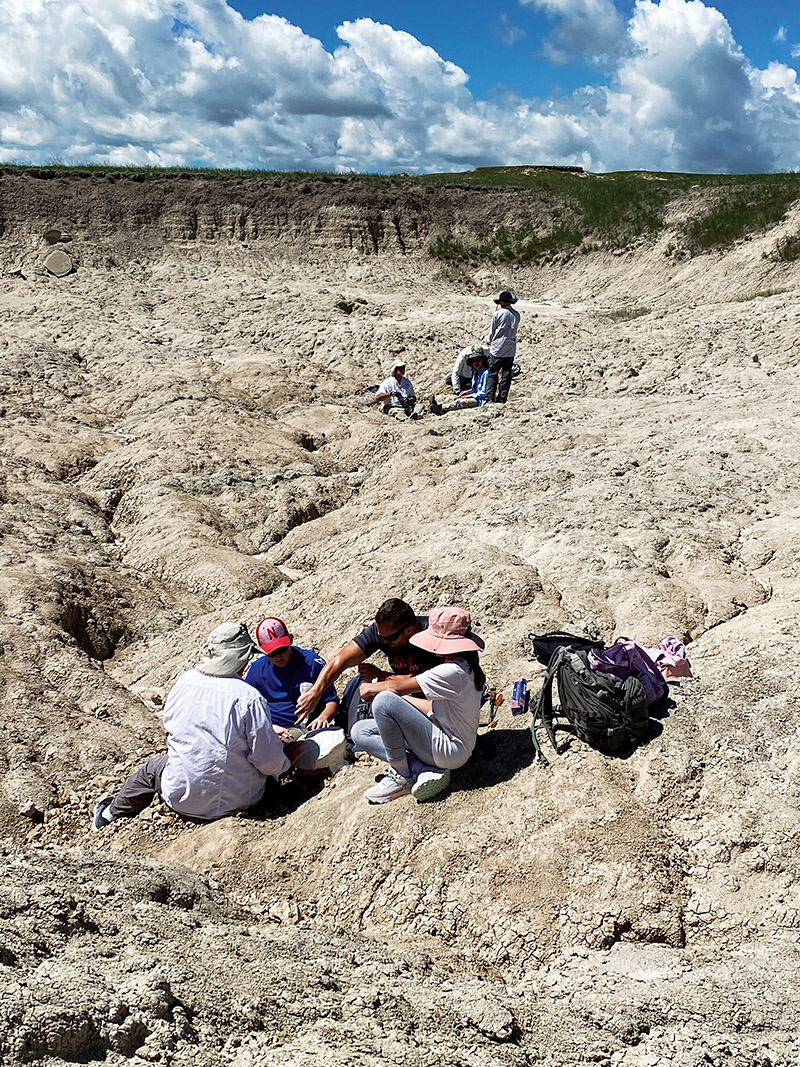
In recent years, the excursion has geared itself toward students, aged 11-14, in the hopes of emerging interest in paleontology and the natural sciences. “We focused on 11- to 14-year-olds, kids just entering their last year of elementary school or middle school. At that age they still have a passion to learn and try new things, but also are coming into their own a little bit and figuring out what they want to do with their lives,” says Christine Michael, the Co-Curator of Learning at the Bishop and one of the chaperones of the trip. Instead of a week spent toiling in the hot sun, the expedition was broken up into two parts: three days spent in the field with Toomey, Roger Portell, Collections Director of Invertebrate Paleontology and Micropaleontology at the University of Florida/Florida Museum of Natural History, and Aaron Bokelmann, a Manatee High science teacher and close friend of Jim’s, and three days spent sightseeing local attractions such as Mt. Rushmore, the Crazy Horse National Monument, and The Mammoth Site.
“As a kid, all we are exposed to is what our parents know, what our teachers know, and that’s kind of it. This trip was so great because we brought the parents along too. Some of them admitted that they’d never sign up for this type of thing, but their kid was interested and boom, here they are sitting in the dirt and digging up a fossil with a rock hammer,” says Michael. “On our first day, we had lunch and got to know Aaron, Jim, and Rodger, and then rode ATVs out to the field. We started out in a calmer, less hilly location where we saw lots of teeth, bones, and fragments of tortoise shells. Everybody at least found something that day, which was really great,” says Constance.
The Badland’s distant past as swampy, temperate water source for mammals has turned its unique geological formations into a graveyard of prehistoric animals. Many of the fossilized remains students found came from the Oligocene Epoch, some 33-23 million years ago. It was the era of the mammal, where early ancestors of our modern animals such as the Mesohippus, Saber-toothed Cats, and Oreodonts roaming the continent.
“I wanted to go on the trip because I want to be a veterinarian when I grow up and I was really interested in learning about some of the ancestors of some of our modern mammals,” attests Constance.
While finding the fossils was one thing, excavating them from layers of solid dirt and rock was another endeavor in and of itself. The multi-step process involved students using different tools such as paint brushes, rock hammers, and screw drivers to dig around the fossil and create a pedestal of sorts for it to sit on. “The goal is to try and figure out how big a piece you have without digging out the whole thing. It’s kind of a slow exploration,” says Michael. Once the fossil is out of the ground, dirt pedestal and all, a plaster jacket is molded around the entire piece to prevent erosion. Those plaster molds, or field jackets are sent back to an associate of Toomey’s who breaks away the dirt and pieces the fossil back together for the student who found it.
“The biggest fossil that I found was a whole turtle shell, about a foot across from neck to rear,” says Jacob Farrington, an 11-year old-student. “We’ll get it back in about a year,” he adds, referencing Fossil Christmas, the event in which the students are given back their reconstructed fossils in roughly a year’s time.
For as arduous a process as fossil digging was and as excruciating the wait is for students to see their fossils, it’s a journey that has been well worth the time and effort. “ In our group, we just all connected. Right off the bat we were great friends, even now we’ve gone over to Jacobs house, and are still talking to them after the trip,” says Constance.




